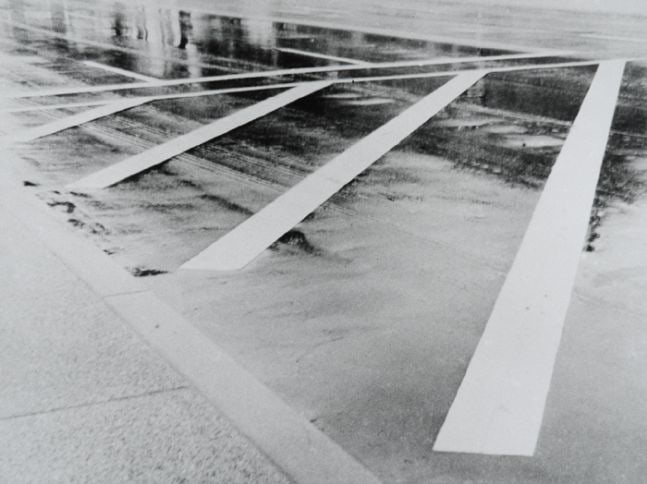
Since one is used to seeing Asian art that is either rooted in a specific cultural context or has a strong imprint of the artist's own culture on it, Nasreen Mohamedi's black and white photographs come as a surprise because of their pure, minimalist beauty that is not tied to any particular context. Instead, the Indian artist's work is more an expression of a vision concerned with the unadulterated essence of beauty and form rather than with social and cultural issues.
Most associated with her minimalistic drawing, Mohamedi's spare aesthetic is rare for an Indian artist because of its sharp variance with the more exuberant figurative and expressionist painting that dominated Modern Indian art. For reasons we don't know of, she never showed her photographs during her lifetime. First exhibited in part at a retrospective of her work at the Jehangir Art Gallery in Bombay in 1991, her photographs are being displayed for the first time in their entirety in New York. Though there are only 24 works, all untitled, they cover her entire photographic work from the late 1950s to the early 1980s.
Mohamedi's unassuming photographs seem almost invisible when you walk into the gallery. It is only when you look at them carefully does their quiet intensity strike you. The exact subject and location of her photographs is often hard to determine but that seems to be the point because her aim is to capture the universal and eternal beauty of a moment or form. Sometimes, you get a hint of what the subject might be - a Mughal courtyard, the patterns of a road in Japan, the horizontal and vertical strings of a loom- with geometric elements perceptible in almost all her photographs. She is particularly sensitive to detail, especially to the interaction between light and surface, which she has beautifully captured in her photograph of a fragment of a Mughal courtyard.
While Mohamedi's art lies in capturing the beauty of a moment or a form, she never stills and appropriates them. Instead her evanescent, delicate works always have a sense of fluidity and continuity to them. It is as if she has focused her lens on the beautiful spaces that exist in the stream of life on the spaces that are beyond time and place, that radiate with a timeless luminescence. This aesthetic is more apparent in her dream-like image of the sweeping sand on a beach, taken in 1968. Later this year, Mohamedi's work will be included in an exhibition entitled, 'The Last Picture Show: Artists Using Photography, 1960-1982 at the Walker Art Center in Minneapolis in the company of artists such as Andy Warhol, Cindy Sherman, and Jeff Koons.
-Priya Malhotra